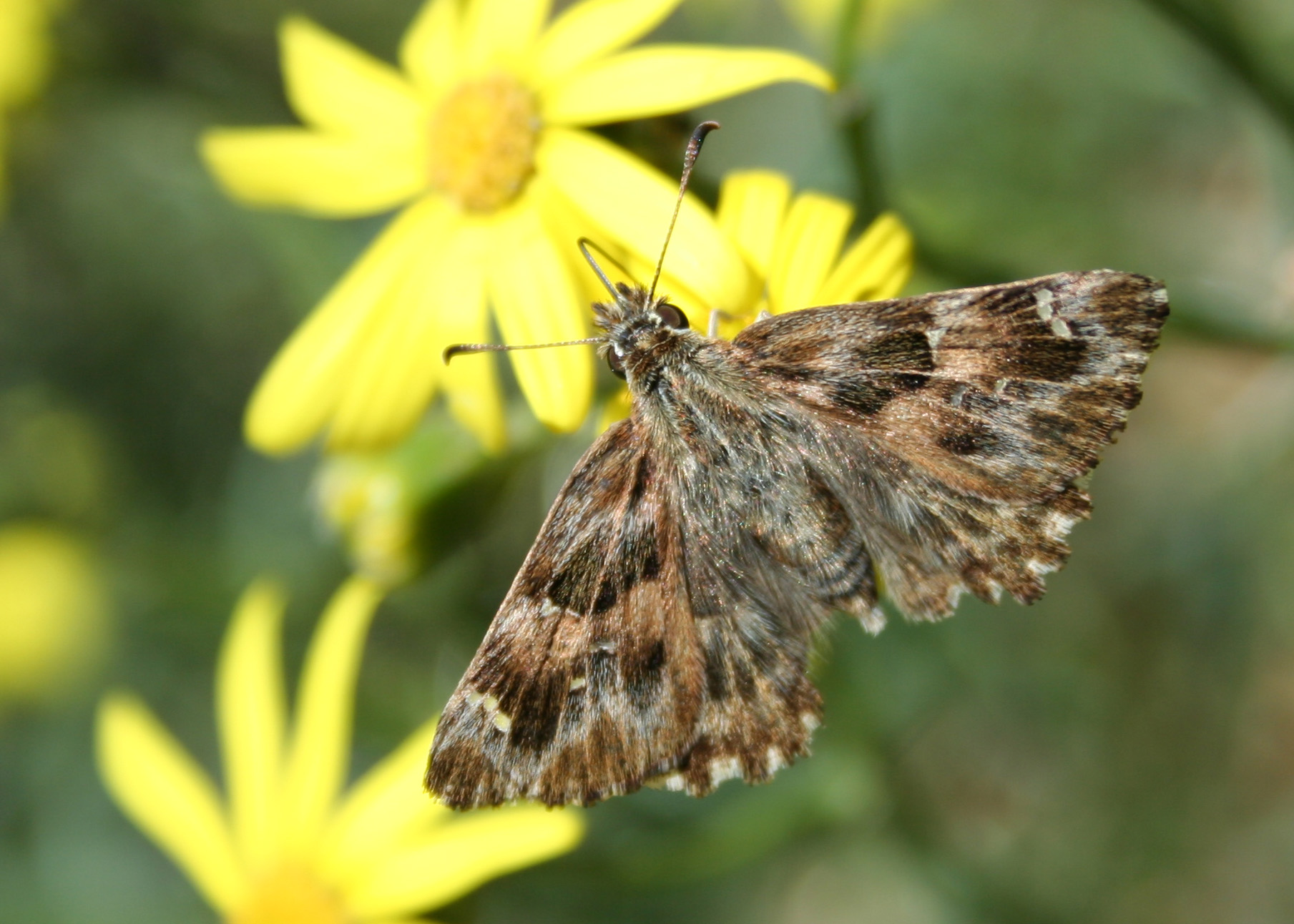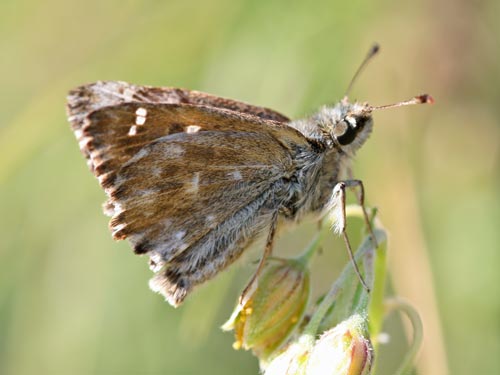Carcharodus alceae
Mallow Skipper ( Carcharodus alceae )
The Mallow Skipper ( Carcharodus alceae ) is a butterfly of the family of the skipper ( Hesperiidae ).
- 7.1 Notes and references
- 7.2 Literature
Features
The moths reach a wingspan of 23-30 millimeters. Their wings are tops with colorful, patterned in several shades of brown and partly yellowish, greyish and orange rectangles. On the fore wings extending from the edge to the wing middle short white horizontal stripes.
The eggs are yellowish and semi-spherical with a flattened base. The surface is covered with elongate warts, which are interconnected with each low rib. The egg thus has a spiky appearance. In the course of development, it turns red.
The caterpillars are about 23 mm long. They are dark gray in color and covered with fine white dots. Her head is black, sitting just behind three small, yellow spots, which are separated by black stripes. The animals have numerous, short, white hair.
Similar Species
- Heilziest - Dickkopffalter ( Carcharodes flocciferus )
Occurrence
The animals come in Southern and Central Europe, Turkey and parts of Central Asia prior to an altitude of 2,000 meters. In Central Europe they are particularly in the south ( eg Swabian Alb and Upper Rhine ) to be found. They live in warm, dry and sunny areas such as gravel pits, quarries on dry grassland or wasteland. Their populations fluctuate yearly basis often very strong.
Way of life
The Mallow Skipper is very dependent on heat and forms in Germany two generations, flying from mid- May to late June and from mid-July to early September. The caterpillars of the first generation can be observed after overwintering in the following year in April, September, and. The larvae of the second generation live from June to July. The type can also produce up to five generations in hot climates and favorable years. The male moths can sometimes be observed here, as they lowered their wings under the breast level to lift their abdomens. Probably depends on this behavior, together with the temperature and light.
Food of the caterpillars
The caterpillars feed on the mallow family ( Malvaceae ), especially by way of Mallow ( Malva neglecta ) and Musk Mallow ( Malva moschata).
Development
The females lay their very coarsely ribbed, light pink colored eggs singly on the upper surface of the leaves of their food plants. The hatched caterpillar builds a shelter, by turns a leaf on one side and fastened by their filaments. They overwinter in this dwelling and pupate early in the spring.
Threats and conservation
- Red List BRD: 3 (endangered ).
- Red List of Baden- Württemberg: 2 (endangered strong).








